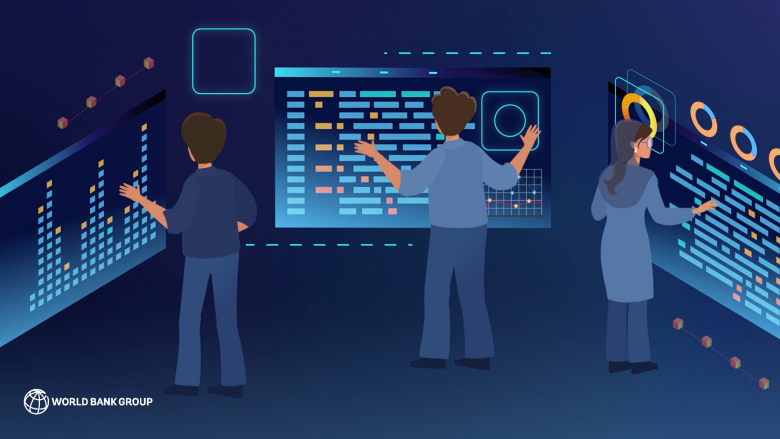Watch the video below on the Sindh Public Sector Management Reform Project.
With the massive scale of development schemes in Pakistan, completing them in an efficient, effective and transparent manner can be a major challenge. Due to the lack of live monitoring and feedback from beneficiaries, making informed and timely decisions on how to take schemes forward has been difficult in the past.
For the Government of Sindh (GoS), the Planning and Development Department (P&DD) oversees the management of all public investments in the province. With support from the World Bank’s Sindh Public Sector Management Reform Project, one of the activities that has brought great advances and benefits not only to P&DD, but also to many other departments, was the development of a proper monitoring and evaluation (M&E) tool. This M&E tool is enabling improvements to project monitoring and allows development schemes to be executed more efficiently, coordinating all external assistance.
For a typical development scheme, the P&DD prepares a one billion dollar-plus Annual Development Plan (ADP) and coordinates all external assistance, including that of the World Bank (WB). Though P&DD has been reasonably effective at preparation and coordination of its plans, the absence of adequate M&E tools has hampered management of development expenditures. This new automated M&E tool provides a clear picture of the status of the provincial portfolio, the main bottlenecks and the results on the ground. In addition, it allows the quality of construction and maintenance to be monitored and provides a feedback mechanism for project beneficiaries.
Geotagging of development schemes and proactive feedback
The World Bank’s objective was to support the accountability and improvement of provincial public investments. The WB’s support enabled the P&DD to track each development scheme’s progress by viewing completed, on-going and planned activities for each scheme, as well as track overall progress of the ADP portfolio of the Provincial Government. Another key aspect was to also implement a mechanism allowing systematic feedback from beneficiaries which could contribute to the overall improvement of the public investment portfolio over time and ensure value for money.
The monitoring of major programs for improved decision-making and to address bottlenecks has been enhanced with process improvements as well as management dashboards. Improvements include using smart phones to collect geo-tagged data of scheme progress and quality (including GPS coordinates); the use of third parties to inspect quality of construction; proactively engaging beneficiaries of projects to get feedback on quality and maintenance; and a management dashboard, for input and output monitoring and related decision-making. The dashboard also comes in the form of a mobile app, so it’s accessible from any smartphone or tablet and offers real-time access to information, data visualization and spatial analyses of the development portfolio and beneficiary feedback.
As of July 2021, P&DD has used the monitoring dashboard across a range of departments such as Irrigation, Education, Energy and Public Health Engineering, to manage programs worth over PKR 1 billion.
In total, 292 ADP Schemes and 3999 Sub Schemes have been recorded in the progress monitoring dashboard and 403 beneficiary feedback have been received.
The GoS plans to continue extending the use of this new system to other departments, not only for the benefit of management, but also as a clear example of institutional strengthening and transparency.
To date, some of the key project’s achievements include geo-tagging of development schemes in 10 departments, the establishment of proactive feedback mechanisms collecting community feedback from provincial ADP schemes costing over PKR 1 billion and the introduction of quarterly monitoring reports for the development schemes. None of these important functions existed when the project was conceived.
“Geotagging of development schemes has improved spatial monitoring and planning capacity and has increased transparency. It helps us monitor projects in real-time, helps us ensure proper monitoring of officers’ visits on-site, and helps authorities to monitor the physical progress of the scheme. Geotagging also helps our planners to avoid duplication of schemes in a specific area to avoid financial loss to the government,” said a representative from the Planning and Development Department.
One of the pillars of the Government of Sindh is accelerating improvements in services. Improved services in Pakistan focuses on multiple strategies, including increasing revenues to fund services, improving public financial management, improving development expenditures, and setting more ambitious stretch targets for areas that are not producing change fast enough.
As a P&DD representative said, “The proactive feedback mechanism has enabled our team to take proactive decisions about ongoing development schemes that are going off-track or proposed new schemes which are not backed by valid on-the-ground justifications. These decisions can be taken to avert financial loss. Feedback mechanisms have also helped in developing a feedback loop between the beneficiaries and the planners and has enhanced citizen oversight of development projects.”
The Sindh Public Sector Management Reform Project touched upon all the aforementioned areas of focus. The project supported several interventions such as tax collection improvement, ICT infrastructure, automation, procurement, adoption of proactive feedback mechanism and establishment of service delivery units. These have directly supported the GoS results plan and its departments (Finance Department, Sindh Board of Revenue, Public Procurement Regulatory Authority and, Planning and Development Department).

